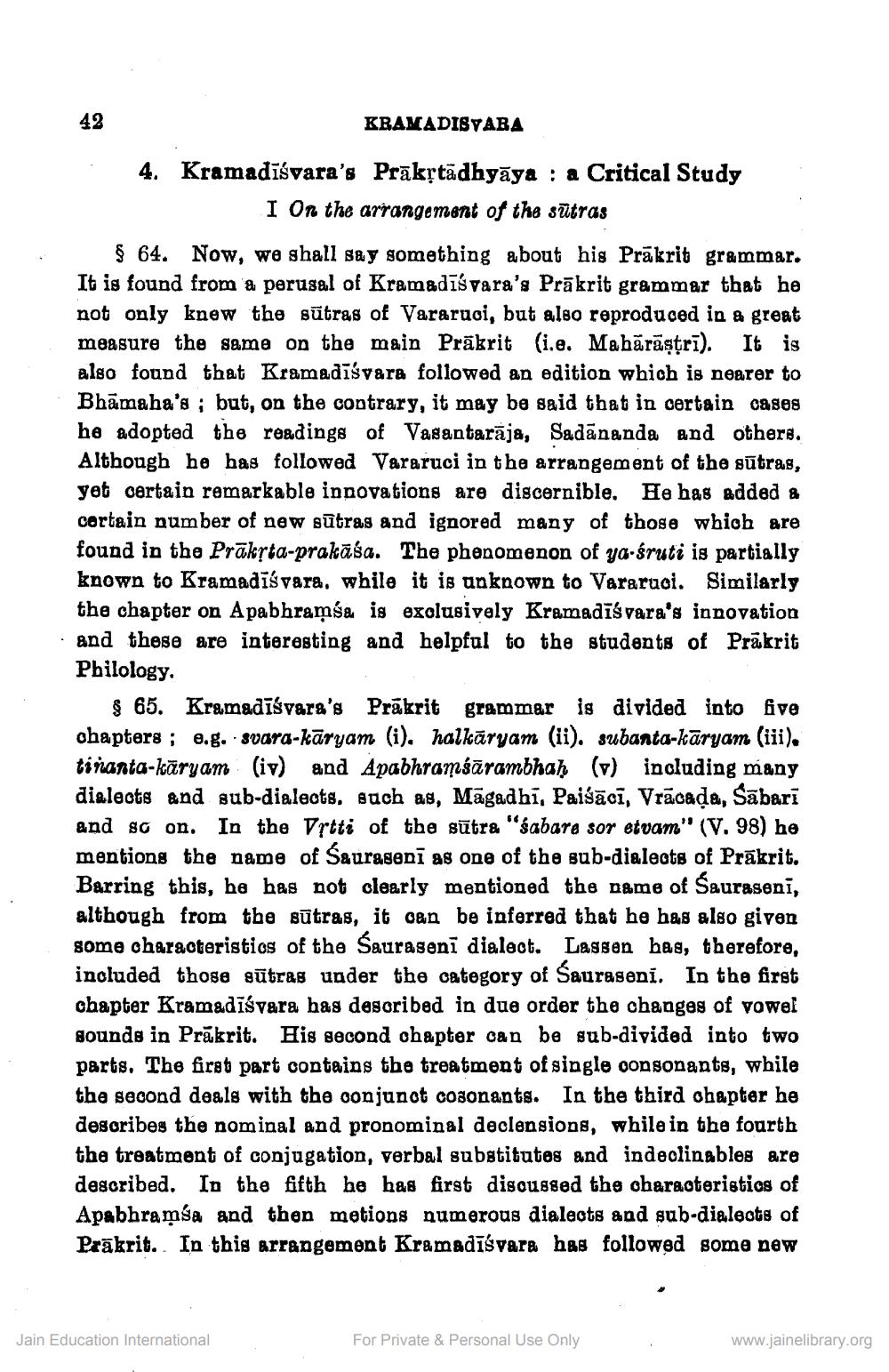________________
KRAMADISVARA
.
4. Kramadīśvara's Prākṣtādhyāya : a Critical Study
I On the arrangement of the sutras
§ 64. Now, we shall say something about his Prākrit grammar. It is found from a perusal of Kramadīśvara's Prākrit grammar that he not only knew the sūtras of Vararuoi, but also reproduced in a great measure the same on the main Prākrit (i.e. Mahārāstrī). It is also found that Kramadīśvara followed an edition which is nearer to Bhāmaha's ; but, on the contrary, it may be said that in certain cases he adopted the readings of Vasantarāja, Sadānanda and others. Although he has followed Vararuci in the arrangement of the sūtras, yot certain remarkable innovations are discernible. He has added & certain number of new sūtras and ignored many of those which are found in the Präkrta-prakāśa. The phenomenon of ya-śruti is partially known to Kramadīśvara. while it is unknown to Vararuci. Similarly
the chapter on Apabhraņģa is exclusively Kramadīśvara's innovation · and these are interesting and helpful to the students of Prakrit Philology.
$ 65. Kramadīśvara's Prakrit grammar is divided into five chapters ; e.g. svara-kāryam (i), halkāryam (ii). subanta-kāryam (iii). tiñanta-kāryam (iv) and Apabhramsārambhah (v) including many dialects and sub-dialects, such as, Māgadhi, Paišācī, Vrācada, Sabarī and so on. In the Vrtti of the sūtra "sabara sor etvam" (V. 98) he mentions the name of Sauraseni as one of the sub-dialects of Prākrit. Barring this, he has not clearly mentioned the name of Sauraseni, although from the sūtras, it can be inferred that he has also given some characteristios of the Sauraseni dialect. Lassen bag, therefore, inoluded those sūtras under the category of Sauraseni. In the first chapter Kramadīśvara has described in due order the changes of vowel sounds in Prākrit. His second chapter can be sub-divided into two parts. The first part contains the treatment of single consonants, while the second deals with the conjunct cozonants. In the third ohapter he describes the nominal and pronominal declensions, while in the fourth the treatment of conjugation, verbal substitutes and indeclinables are described. In the fifth he has first discussed the characteristics of Apabhramsa and then motions numerous dialects and sub-dialects of Prākrit. In this arrangement Kramadīśvara has followed some new
Jain Education International
For Private & Personal Use Only
www.jainelibrary.org




